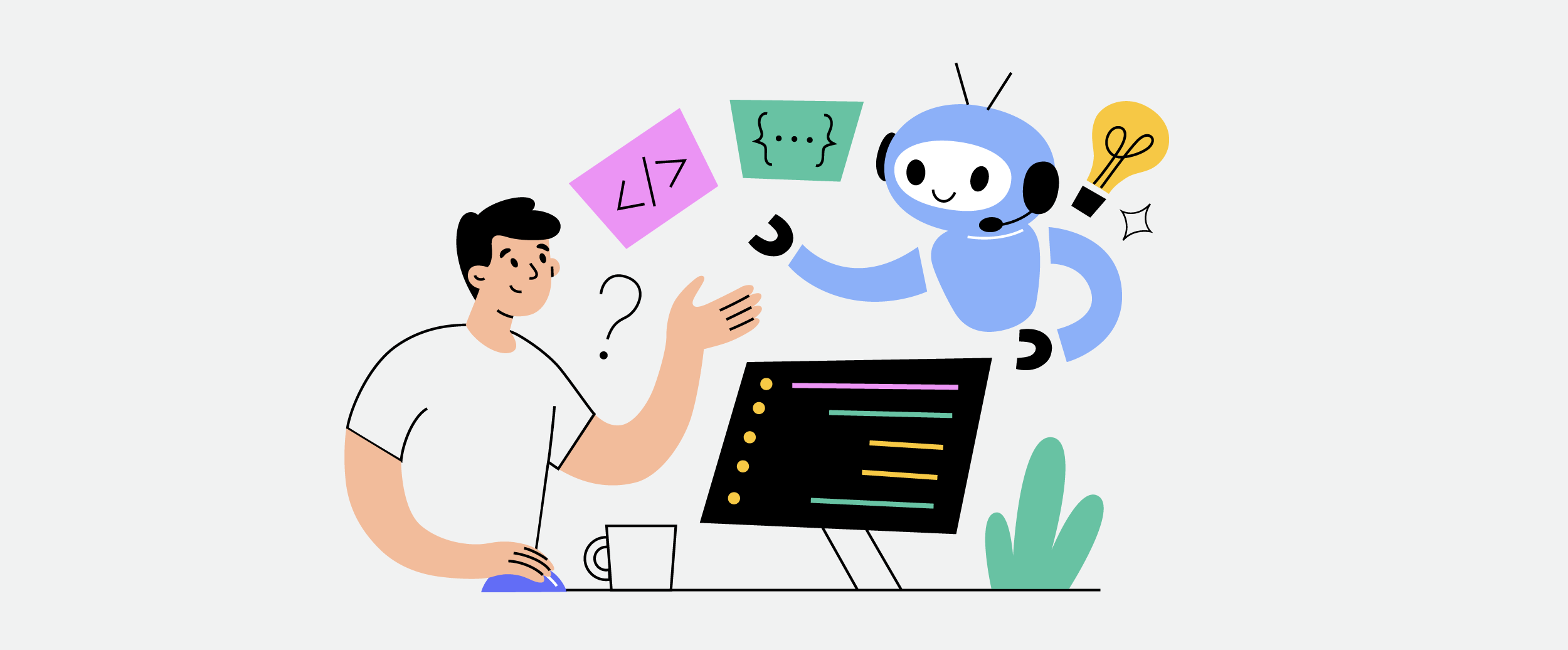AI in the workplace: The skills people need to work effectively with machines
Alexandra Levit – author, futurist, and a columnist with The Wall Street Journal – has been talking about people and AI in the workplace for years. Here she shares her thoughts on the essential skills people will need in this emerging relationship.

Table of Contents
In Ceridian’s 2023 Executive Survey, 81% of leaders said their organisations are using AI in the workplace for repetitive tasks. Goldman Sachs research amplified this finding, showing that around 300 million global jobs stand to be impacted by AI and automation.
However, one of the biggest misconceptions about AI in the workplace is that this technology will completely replace people. The truth is very different. As Mark McNeilly of the Kenan Institute of Private Enterprise said, “You won’t be replaced by AI. You will be replaced by a person with AI skills.”
“People who are fluent in generative and other types of AI will be able to get more done, be more creative, and learn faster than their counterparts who cannot,” McNeilly wrote in recent commentary.
In an interview with CNBC, Microsoft 365 general manager Colette Stallbaumer shared that people are critically important in deciding when and how to use AI. “The human is always in control and with a generated AI response, you have a moment of, ‘Do I want to keep this content? Do I want to modify it? Do I want to discard it?” she said. “You still have to use judgment to make those calls.”
In other words, individuals will have better employment prospects if they understand the skills they need to work effectively alongside AI-based tools that grow smarter by the year. Let’s look at what some of those skills might look like.
Upskilling for AI in the workplace
According to Mohammad Hossein Jarrahi, Paul Leonardi, and Kelly Monahan in a recent Harvard Business Review article, people need to develop distinct cooperative and competitive skills for working with AI.
Competitive skills refer to the unique advantages that humans possess in comparison to AI, while cooperative skills enhance the ability of humans and AI to work together effectively. Let’s look at a few examples of each.
Cooperative skills
AI fluency: This cornerstone skill involves understanding how algorithms are created and how they work, as well as their limitations and the potential for bias that exists when an organisation relies too heavily on them.
AI-based decision making: This skill involves the ability to interpret the data derived from algorithms to inform organisational decisions.
Explanatory communication: People with this skill are intermediaries, translating human business goals into the right algorithms to address them, and prompting AI-tools to put forth the most appropriate data.
Competitive skills
Emotional intelligence: People will always have a leg up in comprehending the emotional nuances of data. And they are also better at communicating results in a way that’s more palatable to other people.
Strategic thinking: Humans can consider a range of organisational factors that might affect data interpretation and can provide the right context for algorithmic results.
Creativity: AI-based tools are very good at doing exactly what we tell them to do, but people are still needed to design new tools to meet evolving stakeholder needs and to reconfigure algorithms to respond in innovative ways.
Vintage innovation: This skill, suggested by education professor John Spencer, involves people taking established ideas and concepts and updating them in a novel way.
What this means for learning and development
It’s the combined responsibility of organisations and individuals to determine the best way to upskill people for AI in the workplace given unique business and job requirements. Here are some strategies you can deploy:
Conduct a skills audit
Before launching upskilling initiatives, you should understand the skills you already have within your workforce and the gaps that currently exist. Technology can be your partner in this process, making the inventory effort far more efficient and effective.
Leverage talent intelligence
Talent intelligence is a form of AI that examines vast numbers of internal and external data points to uncover relationships between skillsets and evaluate employees based on their potential to take on new roles. It can also suggest the fastest way to upskill existing employees into the positions you need to fill.
Redesign jobs
Consider breaking down existing job descriptions into their component tasks and mapping skill needs to those. Through this process, you may find that some jobs naturally combine with others, and that your newly designed roles may span a variety of functions (e.g., IT and HR).
Create a culture of learning
Demonstrate from the top that everyone in the organisation is responsible for their own career durability – or the ability to be gainfully employed and adaptable despite future disruptions. Use self-directed learning portals to recommend training for employees and then give them the freedom and time to take advantage of the offerings.
You may also like:
Ready to get started?

